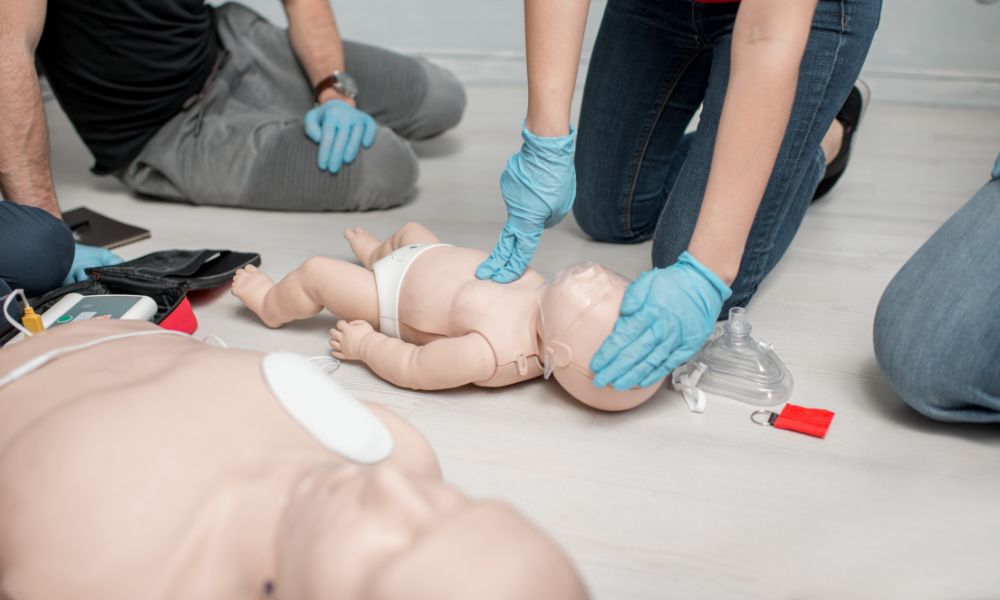Cardiopulmonary resuscitation (CPR) involves a rescuer performing live-saving breaths and chest compressions on a person experiencing cardiac arrest. These actions mimic the heartbeat and breathing, which provides necessary blood flow and oxygen to vital organs. While the goal is the same, the technique varies depending on the person’s age. Learn about the differences between adult, child, and infant CPR.
How To Perform Adult CPR
Before performing CPR, ensure the scene is safe and you are not putting yourself at risk. Then, approach the victim and check for consciousness. Check for a pulse or see if the person is breathing by looking for a rising and falling chest. If they aren’t breathing, then you need to perform CPR. Ensure the victim is lying on their back on a flat surface.
First, place your non-dominant hand over the victim’s heart at nipple level with your fingers splayed. Next, place your dominant hand on top, and interlace your fingers. Straighten your elbows, push in the victim’s chest two inches, and allow the chest to rise fully. Repeat compressions 30 times, and perform two rescue breaths.
To perform a rescue breath, pinch the victim’s nose closed, tilt their head back with their chin up, and close your mouth over theirs. Blow into their mouth until their chest rises, and do this twice. If their chest does not rise, check the airway for blockages. Perform 30 compressions and two rescue breaths at a rate of 100–120 compressions per minute.
How To Perform Child CPR
There is little difference between adult and child CPR. The only changes to your technique for CPR on children (ages 1–22) are the hands you use. Make sure the scene is safe, check for consciousness and a pulse, lay the victim flat, and perform the same cycle of 30 compressions and two rescue breaths while checking the airway for blockages. When performing CPR on a small child, you only need to use one hand. The depth of the compressions should be about two inches.
Taking a PALS certification course can give you the knowledge and training necessary to be able to recognize the differences between victims when an emergency occurs.
How To Perform Infant CPR
Infant CPR is performed on children under 12 months of age. Ensure the scene is safe, check for a response, and ensure the infant’s airway is clear, laying them flat on a hard surface. The technique for infant CPR is a bit different than adult and child CPR.
First, place the tips of your index and middle finger in the center of the infant’s chest directly between their nipples. Then, perform 30 compressions at a rate of two per second, pushing the chest down 1/3 the thickness of their chest, or 1.5 inches. Perform no less than 100 compressions per minute.
After 30 compressions, perform two rescue breaths. Hold the infant’s head slightly tilted back with their chin is up to open the airway. Pinch their nose, seal your mouth over theirs, and breathe into their mouth. If the chest expands, then the air is successfully entering the chest.
Ultimately, the difference in CPR techniques between adults, children, and infants is minimal. However, these differences are incredibly important, and learning them can help you save a life.







